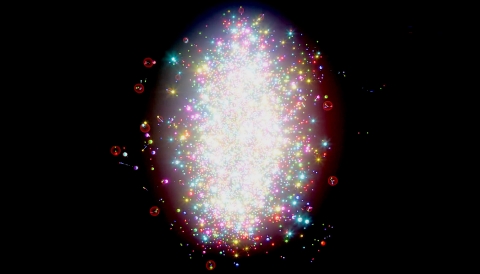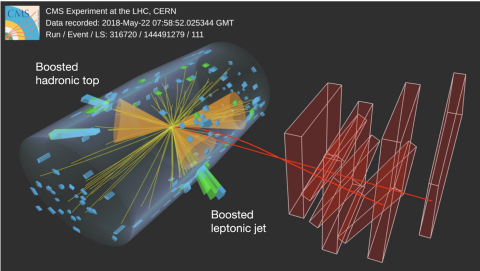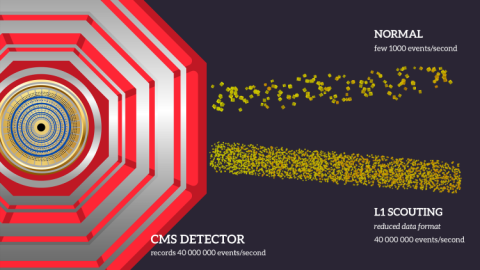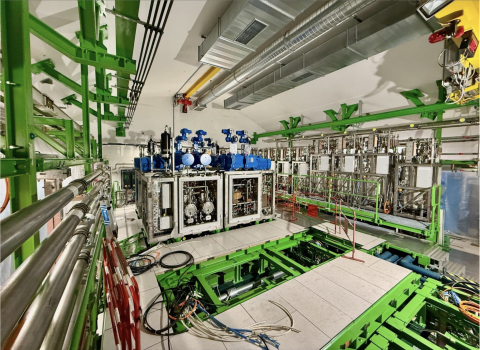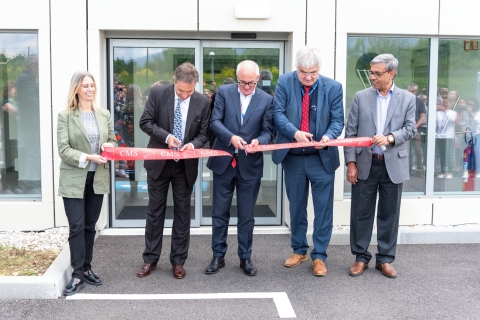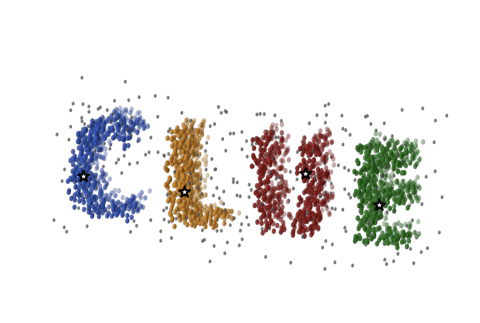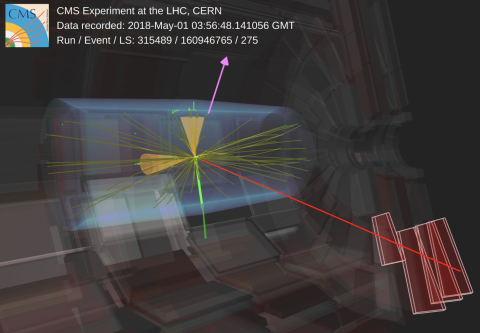CMS
Light ions at the LHC: first results from oxygen–oxygen and neon–neon collisions
This summer, the Large Hadron Collider (LHC) delivered its first-ever collisions between light ions, opening a new chapter in the study of nuclear structure and the quark–gluon plasma (QGP) – the extreme state of matter that existed in the first…
Read moreCMS explores light-ion collisions: suppression, scaling, and collectivity
The CMS experiment has reported first results from the LHC’s dedicated oxygen–oxygen (O–O) and neon–neon (Ne–Ne) collision run, offering an unprecedented look at quark–gluon plasma (QGP) formation in light-ion systems. These studies address long-…
Read moreOLC-R / OLC-1 refurbishment in a Nutshell
For Phase-2, CMS DAQ will undergo a major increase of its capacities to match HL-LHC performance and the related CMS physics program. Compared to the present situation (Run3), the post-trigger data throughput will increase from 2 Tb/s today to 50 Tb…
Read moreAn all-round boosted chase for supersymmetry
It is rare for a theory to inspire as much experimental attention as supersymmetry has. CMS completed more than 40 SUSY searches in Run 2 alone, reflecting how compelling this framework remains in the quest for new physics. SUSY proposes that every…
Read moreHow CMS records all 40 million events per second
Traditional data taking workflows at the LHC experiments rely on a filtering step – called Level-1 trigger – that reduces the amount of data to a manageable level. The Level-1 trigger is implemented in hardware, takes only a few…
Read moreNext-Generation CO₂ Cooling Systems Powering the Future of ATLAS and CMS
Four CO2 cooling plants and accumulators in the service cavern of CMS in May 2025. (Photo by Jérôme Daguin) During recent shutdown periods, CERN engineers and technicians — in collaboration with the ATLAS and CMS teams — began installing the…
Read moreCMS Inaugurates Its New Control Room
On 15 May 2025, CMS officially inaugurated its new control room at Point 5 in Cessy, France. The celebration brought together guests from CERN management and representatives of all LHC experiments to mark this significant upgrade to CMS’s…
Read moreCLUE: A Scalable Clustering Algorithm for the Data Challenges of Tomorrow
The foreseen increase in luminosity and pileup at the High-Luminosity Large Hadron Collider (HL-LHC) [1] will challenge both the detector hardware and the reconstruction software. With higher pile-up, calorimeter energy reconstruction depends even…
Read moreAnomaly at the Threshold: A Closer Look at tt̄ Events in CMS
Some of the most intriguing developments in physics begin not with a discovery, but with an anomaly, subtle, persistent, and difficult to ignore. In 2019, CMS reported a mild excess of around three standard deviations in a search for heavy…
Read moreCMS Launches New Monthly Newsletter: Le Point Cinq
The CMS collaboration is excited to announce the launch of its new monthly newsletter, "Le Point Cinq." This fresh communication channel will provide regular updates on CMS physics highlights, the progress of upgrade projects, and essential…
Read more
